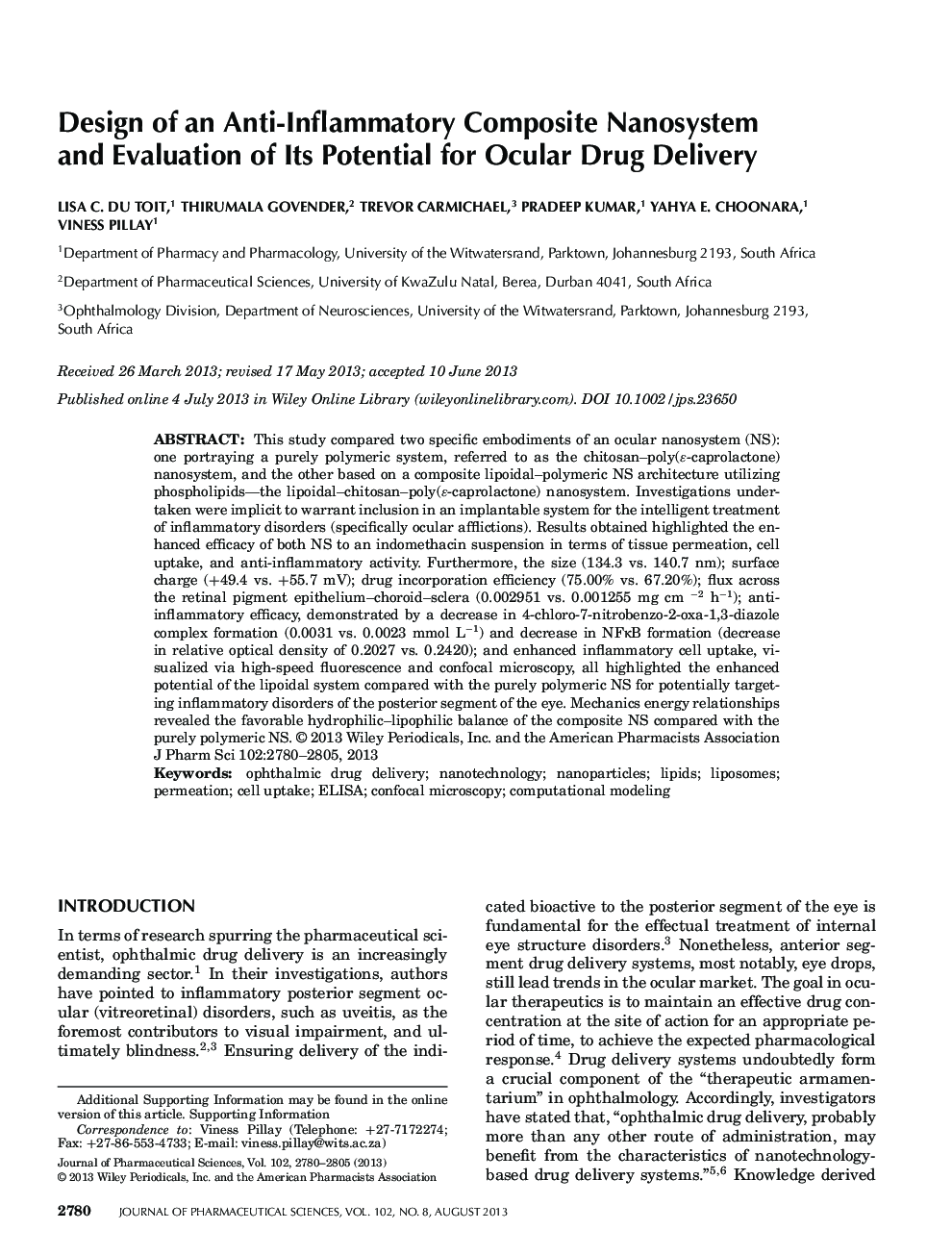| Article ID | Journal | Published Year | Pages | File Type |
|---|---|---|---|---|
| 10162710 | Journal of Pharmaceutical Sciences | 2013 | 26 Pages |
Abstract
This study compared two specific embodiments of an ocular nanosystem (NS): one portraying a purely polymeric system, referred to as the chitosan-poly(ε-caprolactone) nanosystem, and the other based on a composite lipoidal-polymeric NS architecture utilizing phospholipids-the lipoidal-chitosan-poly(ε-caprolactone) nanosystem. Investigations undertaken were implicit to warrant inclusion in an implantable system for the intelligent treatment of inflammatory disorders (specifically ocular afflictions). Results obtained highlighted the enhanced efficacy of both NS to an indomethacin suspension in terms of tissue permeation, cell uptake, and anti-inflammatory activity. Furthermore, the size (134.3 vs. 140.7 nm); surface charge (+ 49.4 vs. + 55.7 mV); drug incorporation efficiency (75.00% vs. 67.20%); flux across the retinal pigment epithelium-choroid-sclera (0.002951 vs. 0.001255 mg cm â 2 hâ 1); antiinflammatory efficacy, demonstrated by a decrease in 4-chloro-7-nitrobenzo-2-oxa-1,3-diazole complex formation (0.0031 vs. 0.0023 mmol Lâ 1) and decrease in NFκB formation (decrease in relative optical density of 0.2027 vs. 0.2420); and enhanced inflammatory cell uptake, visualized via high-speed fluorescence and confocal microscopy, all highlighted the enhanced potential of the lipoidal system compared with the purely polymeric NS for potentially targeting inflammatory disorders of the posterior segment of the eye. Mechanics energy relationships revealed the favorable hydrophilic-lipophilic balance of the composite NS compared with the purely polymeric NS. © 2013 Wiley Periodicals, Inc. and the American Pharmacists Association J Pharm Sci 102:2780-2805, 2013
Keywords
Related Topics
Health Sciences
Pharmacology, Toxicology and Pharmaceutical Science
Drug Discovery
Authors
Lisa C. Du Toit, Thirumala Govender, Trevor Carmichael, Pradeep Kumar, Yahya E. Choonara, Viness Pillay,
